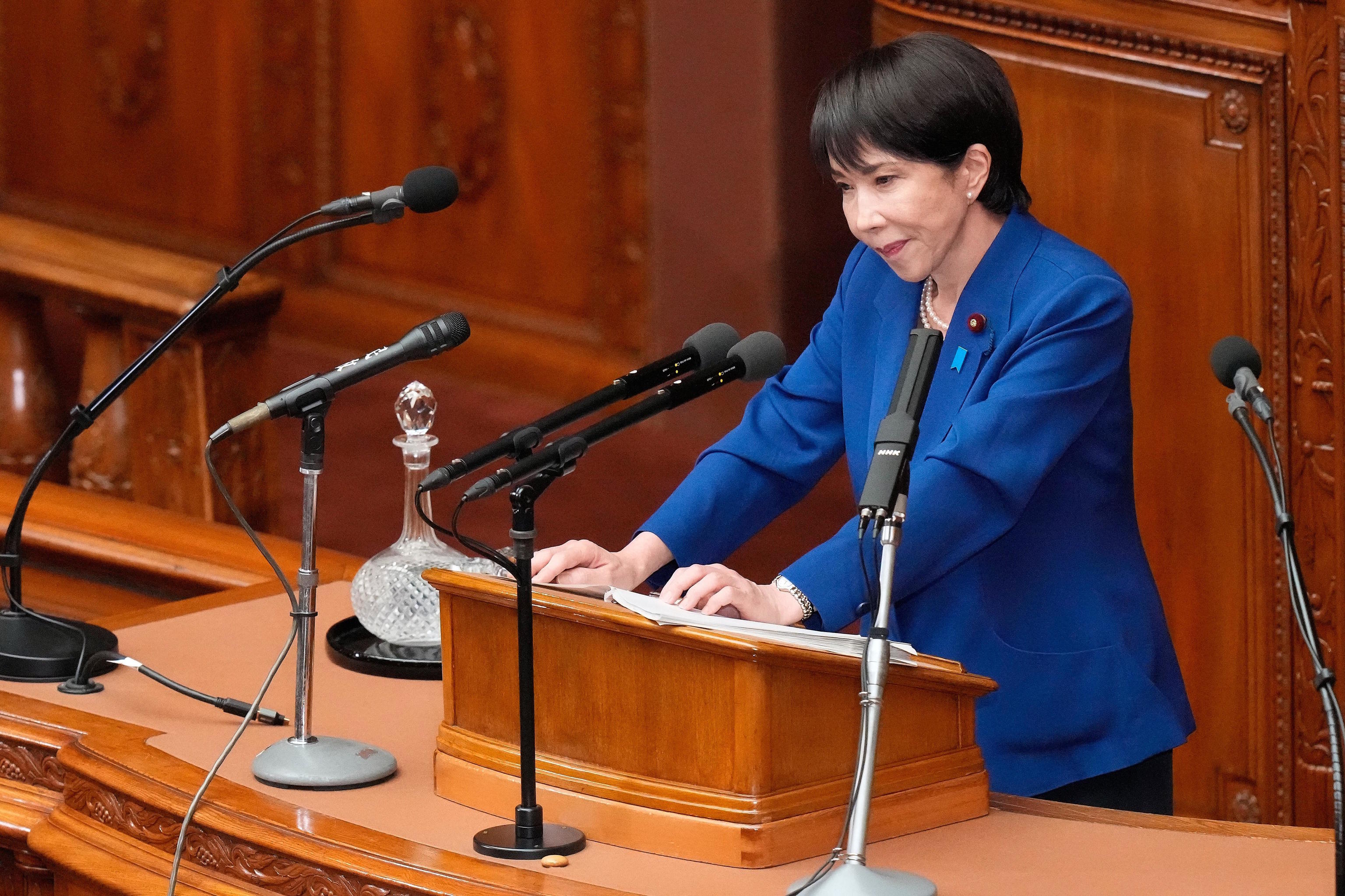For over two centuries, Japan was probably one of the most isolated countries in the world. Under a policy known as sakoku, the entry of foreigners was prohibited, and Japanese citizens attempting to leave faced the death penalty. For Japanese rulers, everything outside represented a threat: colonial powers seizing Asian empires, traders fueling greed, and European missionaries filling the streets with distant religious doctrines.
There are many Japanese sociologists who argue that this prolonged isolation generated a national consciousness based on homogeneity, on the idea that the country's strength lies in its ethnic and cultural unity, in preserving a supposed purity. And that, despite the subsequent expansionism in Asia and its more recent explosion of modernity and technology, this ultranationalist thinking remains deeply rooted in part of society.
One of the first measures taken by Japan's new Prime Minister, Sanae Takaichi, after taking office, was to establish an office in her cabinet to promote what she called an "ordered coexistence society with foreigners." In other words, an agency to crack down on irregular immigration and oversee much stricter future immigration policies.
Takaichi, the first woman to govern the world's fourth-largest economy, thus revived one of the slogans of the Japanese far-right, imported from the MAGA movement of U.S. President Donald Trump, which she embraced during her campaign: "Japan first".
The nationalist leader has stated that migration, rather than an opportunity for one of the world's most aged countries with historically low birth rates, is a threat to the long-cherished internal harmony. She argues that foreign labor must enter very specific sectors where the country faces shortages, but only if strict criteria such as Japanese proficiency and training are met.
In the coming weeks, a radical shift in immigration policy is expected with stricter measures to obtain visas, residence permits, and compliance with taxes by foreign residents, who barely represent 3% of a population of over 120 million people. The ruling party, the Liberal Democratic Party (LDP), has stated that visas for long-term resident foreigners will be revoked if they fail to comply with the new regulations to be approved.
On Tuesday, in her first press conference after being elected Prime Minister by Parliament, Takaichi promised to work to restore Japan's economic power and deepen the relationship with the United States under the Trump presidency, who will travel to Tokyo in a few days to meet with the new leader, a political disciple of the late conservative Prime Minister Shinzo Abe, who had a very good rapport with the Republican.
For the new immigration portfolio, Takaichi has appointed a lawmaker, Kimi Onoda, with an American father and Japanese mother, who is very close to Ishin, the party with which the LDP has just formed a coalition to enable the leader to govern. This party proposed a government limit on the percentage of foreign residents to below 10% of the total population. Takaichi has also approached the rising far-right populist party Sanseito in recent weeks, which describes immigration as a "silent invasion."
"The crimes and disruptive behavior of some foreign citizens, as well as the inappropriate use of public systems, are causing anxiety and a sense of injustice among Japanese citizens," Onoda declared in her first appearance. A rumor spread on social media - later denied by the Japanese government - that a mass deportation campaign of foreign citizens would soon begin.
Many conservative Japanese politicians campaigned after it was revealed late last year that there was a record 3.76 million foreign residents in the country, claiming that they were taking jobs from Japanese workers and were more likely to commit crimes.
In Kawaguchi and Warabi, two cities in Saitama Prefecture with a large Kurdish community, several incidents have been reported this year between residents and migrants, after some local leaders, who had the platform of social media and sympathetic newspapers, claimed, without data, that the presence of Kurds had led to an increase in crime.
"Japan is a warning sign for many developed countries facing a demographic crisis due to falling birth rates. Its population has decreased for 16 consecutive years. Its economy needs foreign workers, not the nationalist approach driven by its new leader," said Professor Adam Simpson, a researcher at the Southeast Asian Studies Center at Kyoto University, in an analysis this week. For many analysts, the harsh migration policies promoted by Takaichi will lead to "demographic suicide".
Recently, the central government's international cooperation agency closed a multicultural partnership program aimed at strengthening ties between four major cities in the country and four African nations. The reason was that many residents of Japanese cities protested, fearing that their neighborhoods would be "invaded" by workers from Mozambique, Nigeria, Ghana, and Tanzania.
The nationalist shift of Takaichi's new government has not surprised anyone, neither in Tokyo nor in neighboring Asian countries. Now, the new leader's diplomatic skills will be put to the test with Trump's visit, which will likely begin next Monday. As reported by the public broadcaster NHK on Thursday, the Japanese leader will seek to build a personal relationship of trust with the American president and further enhance the traditional security alliance between the two countries. She will also explain to Trump the defense policy Japan will follow.
